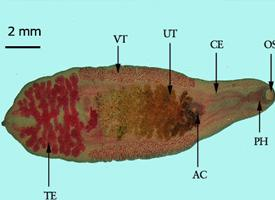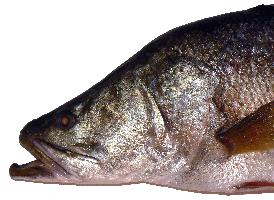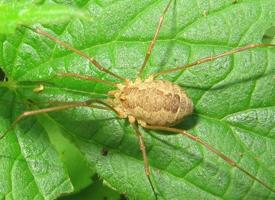
Poids et mesures
| Longueur | de 9 à 18 cm |
|---|
Description de l'animal
Toxocara canis, commonly known as the dog roundworm, is a widespread parasitic nematode that primarily infects dogs and other canines such as foxes and wolves, but can also have serious health implications for humans, especially children. These roundworms belong to the phylum Nematoda and are a significant concern in veterinary and public health.Adult T. canis worms predominantly reside in the small intestine of their hosts. They are large, whitish to pale yellow in color, and can reach lengths of up to 18 cm, with the females generally being larger than the males. The body of the worm is cylindrical, tapering at both ends, and covered by a cuticle with distinctive longitudinal lines, giving it a somewhat striped appearance.
The life cycle of T. canis is complex and involves both direct and indirect transmission. In dogs, the infection occurs through several routes: ingestion of infective eggs from the environment, transplacental transmission from mother to fetus, and transmammary transmission through the mother's milk. The eggs are incredibly resilient and can remain viable in the soil for months or even years under suitable conditions.
Once ingested, the eggs hatch in the dog's intestine, releasing larvae that penetrate the gut wall and embark on a migratory journey through the body. Depending on the host's age and immune status, the larvae can travel to various organs, including the liver and lungs, before eventually returning to the intestine to mature into adults. In young puppies, this migration can cause significant damage and lead to symptoms such as diarrhea, vomiting, weight loss, and a pot-bellied appearance.
T. canis can also infect humans, typically when children inadvertently ingest infective eggs from contaminated soil or hands. In humans, the larvae are unable to complete their life cycle but can cause a condition known as visceral larva migrans. This occurs when the migrating larvae cause inflammation and damage to tissues in organs such as the liver, lungs, and brain. Ocular larva migrans is another condition that can arise if the larvae migrate to the eyes, potentially leading to vision loss.
Prevention and control of T. canis infections involve a combination of measures, including regular deworming of dogs, especially puppies, proper disposal of dog feces, and educating the public about the risks of infection and the importance of hygiene. Effective deworming protocols are crucial for reducing environmental contamination with eggs and minimizing the risk of human infection.
In summary, Toxocara canis is a significant parasitic nematode with a complex life cycle that can affect dogs and humans. Its ability to cause serious health problems, especially in young animals and children, underscores the importance of preventative measures and public health education to control its spread.
Animaux similaires
Nouvelles photos d'animaux
Top 10 des animaux
- Dolphin gull (Leucophaeus scoresbii)
- Japanese macaque (Macaca fuscata)
- Stone loach (Barbatula barbatula)
- Greek tortoise (Testudo graeca)
- Russian tortoise (Testudo horsfieldii)
- Galápagos tortoise (Geochelone nigra complex)
- Diana monkey (Cercopithecus diana)
- Moustached guenon (Cercopithecus cephus)
- Common flying dragon (Draco volans)
- Galápagos penguin (Spheniscus mendiculus)


